Watercress, a peppery, leafy green often enjoyed by humans, is packed with valuable nutrients. But when it comes to our feline friends, is this plant a viable snack option? This raises the question, “Can Cats Eat Watercress?” In this article, we will explore the effects of feeding watercress to cats, carefully examining the potential advantages and risks to give you a thorough understanding of the topic.
What Is Watercress
Watercress, a perennial plant native to Europe and Asia, has now spread its roots across the globe, flourishing in diverse regions worldwide. It thrives in damp, aquatic environments such as the edges of rivers and streams. This green leafy plant, belonging to the Brassicaceae family, is known for its distinctive, slightly peppery flavor. It is a popular ingredient in salads and sandwiches and has earned a reputation as a superfood due to its high content of vitamins A, C, and K, as well as several essential minerals.
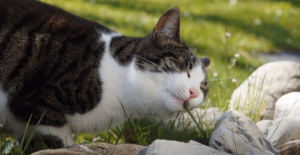
Nutrition Facts Of Watercress
Watercress is a nutrient-dense green leafy vegetable. A single cup of raw watercress (about 34 grams) contains a mere 4 calories but provides a host of vital nutrients. It contains 22% of the daily recommended intake of vitamin A, 24% of vitamin C, and a whopping 106% of vitamin K. It is also a good source of calcium, providing about 4% of the daily requirement. Additionally, it contains other minerals such as potassium, magnesium, and phosphorus in smaller amounts. Watercress is also rich in antioxidants, which help combat harmful free radicals in the body, contributing to overall health. With such an impressive nutritional profile, it is easy to understand why watercress would pique the interest of cat owners looking for healthy food options for their feline companions. [1]
Nutritional Benefits Of Watercress
With its abundant array of nutrients, watercress provides numerous health benefits for humans. However, does it have the same effect on our feline friends? Watercress is packed with vitamins A and C, both of which are beneficial for cats. Cats rely on Vitamin A for their vision, growth, and immune function, while Vitamin C aids in combating oxidative stress. Moreover, the calcium found in watercress can support strong bones and teeth in cats. The presence of antioxidants in watercress may also offer potential health benefits, potentially aiding in the neutralization of harmful free radicals. It is important to acknowledge that cats, being obligate carnivores, primarily obtain their necessary nutrients from meat sources. While the vitamins and minerals found in watercress may provide some additional benefits, they cannot replace a cat’s need for a primarily meat-based diet.
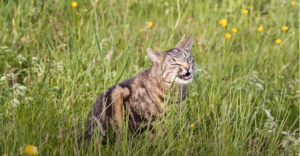
Can Cats Eat Watercress?
While cats can technically consume watercress, it is not advisable to include it as a regular part of their diet. Despite the plant’s nutrient-rich profile, it can pose potential risks to feline health. Feeding your cat a small quantity of watercress may not cause immediate harm. However, it’s important to note that regular or large portions could potentially result in gastrointestinal discomfort such as vomiting, diarrhea, and abdominal pain. In severe cases, consuming too much watercress can cause hemolytic anemia, where a cat’s red blood cells are destroyed faster than they can be replenished. To be safe, avoid giving watercress to your cat. If your cat accidentally ingests watercress, monitor for any signs of distress and consult with a vet immediately if adverse symptoms manifest. Remember, while we may see the nutritional benefits of watercress, cats have different dietary needs and sensitivities. [2]
What Do They Like About It?
Cats are known for their curious nature and sometimes this curiosity extends to exploring different food items. While it’s not entirely clear why some cats might take an interest in watercress, it’s possible that the plant’s strong, peppery scent could pique their curiosity. Cats have a strong sense of smell and love to explore by sniffing new things. The unique taste of watercress might also intrigue some cats. However, it’s crucial to remember that just because a cat shows interest in a food item, it doesn’t necessarily mean it’s safe or beneficial for them to eat. Despite any potential interest they may show, it’s best to keep watercress out of your cat’s reach to prevent any potential health risks.
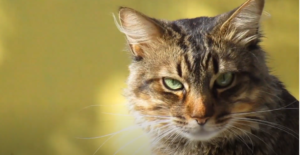
Are There Risks Associated With Eating Watercress?
Yes, there are risks associated with cats eating watercress. Despite its nutrient-rich profile, watercress contains compounds that can be detrimental to feline health.
This compound is known to cause gastrointestinal distress in cats. Symptoms can range from mild discomfort, such as nausea and stomach upset, to more severe issues like vomiting, diarrhea, and abdominal pain. Consuming excessive watercress can cause hemolytic anemia in cats, a condition where their red blood cells are destroyed faster than they can be replenished. These symptoms may manifest as fatigue, loss of strength, rapid breathing, and a pallor of the gums. Therefore, while cats may show interest in watercress, it’s best to avoid giving it to them due to these potential health risks. If your cat has consumed watercress and shows any signs of distress, consult with a veterinarian immediately. [3]
Is It Safe To Give Them Watercress Regularly?
Due to the potential health risks associated with watercress, it is advisable to avoid regularly including it in your cat’s diet. While it’s nutrient-rich for humans, the specific compounds in watercress can cause significant gastrointestinal distress and even lead to severe health conditions like hemolytic anemia in cats. As obligate carnivores, cats primarily obtain their crucial nutrients from meat rather than plant matter. Therefore, their dietary needs and tolerances are quite different from ours. If your cat has accidentally consumed watercress, observe for any signs of discomfort or illness, and consult a veterinarian if necessary. For the safe and healthy diet of your feline friend, it’s best to stick to cat-approved foods and treats.
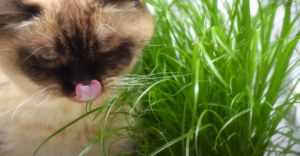
How Much Watercress Should a Cat Eat at Once?
Due to potential health risks, it’s best not to feed your cat any watercress. While a small quantity might not lead to immediate harm, regular or large portions could cause significant gastrointestinal distress and could even lead to severe health conditions such as hemolytic anemia. Cats have unique dietary needs as obligate carnivores, necessitating a meat-based diet. Incorporating watercress or similar plant matter into their diet has the potential to disturb their digestive system. If your cat accidentally consumes watercress, monitor its behavior closely for any signs of discomfort and consult with a veterinarian immediately. For your cat’s wellbeing, it’s best to stick to cat-approved food items. [4]
Side Effects Of Eating Watercress
Ingesting watercress can lead to a variety of side effects in cats due to its specific compounds. Gastrointestinal distress is the most common side effect, typically causing symptoms like nausea, vomiting, diarrhea, and abdominal pain. These symptoms are caused by a compound in watercress called phenethyl isothiocyanate, which cats cannot effectively process. Moreover, excessive consumption of watercress can result in a more serious condition known as hemolytic anemia, where a cat’s red blood cells are depleted at a faster rate than they can be replenished. Symptoms of this condition include lethargy, weakness, rapid breathing, and pale gums. To ensure the well-being of your feline friend, it is highly recommended to prevent access to watercress due to its possible side effects. If your cat has ingested watercress and shows any signs of distress, it is crucial to promptly seek veterinary care.
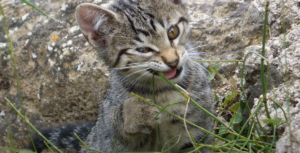
Are There Any Precautions I Should Take When Feeding My Cat This Plant?
Given the potential health risks associated with watercress, the best precaution is to refrain from feeding it to your cat altogether. However, if you’re growing watercress at home or if it’s within your cat’s reach, ensure it’s stored securely out of their reach. Similarly, if you use watercress in your cooking, be extra careful to prevent your cat from accessing any remnants or scraps. Always monitor your cat’s behavior and if you suspect they have consumed watercress, watch for symptoms of distress such as vomiting, diarrhea, or lethargy. If any adverse symptoms appear, consult with a veterinarian immediately. Always remember, your feline companion’s dietary needs are unique and different from yours, and it’s best to feed them food specifically designed for cats. [5]
FAQ
Can cats eat potatoes & beans?
While cats can consume potatoes and beans in moderation, it is advisable to avoid making these foods a regular component of their diet. Cooked potatoes are safe for cats to consume as the thorough cooking process breaks down the solanine, a toxic compound present in raw potatoes. Nevertheless, they contain a high amount of carbohydrates, which are not essential in a cat’s diet. Beans are a good source of protein, but they also contain certain natural compounds, like lectins, that can be harmful if consumed in large amounts or if not cooked properly. Cats’ primary diet should be high-quality cat food, which is specifically designed to meet their nutritional needs. It is always recommended to seek guidance from a veterinarian prior to introducing any new food into your cat’s diet.
Why do cats eat cat grass?
Cats are known to eat cat grass for a few reasons. Although cats are obligate carnivores, they sometimes consume grass, which is thought to assist in their digestion, aid in hairball control, and provide essential nutrients. Consuming grass can trigger vomiting in cats, aiding in the elimination of indigestible substances like fur, feathers, or bones that may be stuck in their stomach. It is also believed that grass contains some folic acid, an essential vitamin for a cat’s bodily functions, which they might not get from their meat-centric diet. However, it’s important to note that while eating grass is generally safe, not all plants are safe for cats. Ensure that any grass your cat can access is free from pesticides, fertilizers, or other potentially harmful chemicals.
Can cats eat beans?
Cats can eat beans, but only in small quantities and not as a regular part of their diet. Beans are rich in protein, which is beneficial for cats. However, they also contain natural compounds like lectins, which can be harmful in excessive amounts or if not cooked properly. Additionally, certain beans can lead to gastrointestinal discomfort in cats due to their elevated fiber content. As a rule of thumb, beans should never be a substitute for the nutrition your cat gains from their meat-based diet. Always cook beans thoroughly if you choose to feed them to your cat and remember to introduce any new food gradually to monitor for any adverse reactions. As always, when making dietary changes for your cat, it’s recommended to consult a veterinarian.
Can animals eat watercress?
While some animals can eat watercress, it’s essential to consider each species’ specific dietary needs and tolerances. Like cats, dogs might experience stomach upset if they consume watercress due to the presence of phenethyl isothiocyanate. Watercress can be included in the diet of small pets such as rabbits and guinea pigs, but it should be given in moderation. Due to their delicate digestive systems, large quantities may not be well-tolerated. As for birds, while watercress isn’t toxic to them, it’s not a common part of their diet and thus should be introduced carefully. In all cases, it’s best to consult with a veterinarian or a pet nutrition expert before introducing watercress or any new food into your pet’s diet.
Who should not eat watercress?
While watercress is generally safe and healthy for most people, certain groups should exercise caution. Individuals with kidney conditions should avoid consuming watercress as it’s high in potassium which could be problematic for kidneys that aren’t fully effective. People with stomach or intestinal ulcers, acid reflux, or other gastrointestinal conditions may find that watercress exacerbates their symptoms due to its peppery nature. Pregnant and breastfeeding women should consume it in moderate amounts, as excessive intake may have uterine stimulant effects. Likewise, those taking blood-thinning medications should monitor their intake as watercress has high vitamin K content which can interfere with these drugs.
What vegetables cats Cannot eat?
Certain vegetables can pose a risk to cats and should be avoided. These include onions, garlic, and related vegetables (leeks, chives), which can cause gastrointestinal upset and could lead to red blood cell damage. Similarly, green tomatoes and raw green potatoes contain solanine, a substance that can cause nausea, vomiting, and heart problems in cats. Cats should also avoid consuming avocados, which contain persin, a toxic compound that can cause vomiting and diarrhea in cats. Lastly, rhubarb leaves contain oxalates that can affect the digestive, nervous, and urinary systems.
What greens can cats eat?
While cats can safely consume certain leafy greens, it is important to note that these should only constitute a small portion of their overall diet. Spinach can be beneficial for cats if served in small quantities and cooked well to eliminate any harmful elements. Cats can also enjoy lettuce, but it’s important to wash it thoroughly to eliminate any possible pesticides. Catnip, while not technically a vegetable, is a plant that most cats enjoy and can be safely consumed. Lastly, cat grass is a safe and beneficial choice – it’s usually a mix of wheat, barley, rye, and oat grasses. Although cats can eat these greens, it is crucial to remember that cats are obligate carnivores and should primarily rely on high-quality cat food for their nutritional needs.
Can cats eat garlic?
No, cats should not eat garlic. Garlic, as well as other members of the allium family like onions, leeks, and chives, contains a compound called thiosulfate that is toxic to cats. Even small amounts can cause oxidative damage to red blood cells, leading to hemolytic anemia. Symptoms of garlic poisoning in cats may include lethargy, pale gums, elevated heart rate, vomiting, and even collapse in severe cases. If you suspect that your cat has ingested garlic, immediate veterinary attention is required. It is crucial to seek advice from a veterinarian prior to introducing any new food into your feline friend’s diet.
Why do cats lick you?
Cats lick their owners as a form of social bonding or affection, akin to how they might groom their fellow feline friends. This behavior stems from their kittenhood when their mothers would lick them for grooming and bonding purposes. By licking you, your cat is expressing trust and comfort in your presence. It’s also their way of marking you with their scent, indicating that you are part of their ‘family’. However, excessive licking can sometimes be a sign of anxiety or underlying health issues. It’s always essential to monitor your cat’s behavior and consult with a veterinarian if you notice any sudden or significant changes.
Why do my cats stare at me?
Cats may stare at their owners for a variety of reasons, often signaling their curiosity or interest. They are naturally observant creatures and may watch you to understand your patterns and behaviors, which can help them predict when they might get food, playtime, or affection. Occasionally, your cat may be seeking your attention or trying to communicate a specific need, such as wanting to be fed or let outside. However, prolonged staring can sometimes indicate discomfort or aggression in cats, especially when accompanied by dilated pupils or an erect tail. If you find yourself worried about your cat’s intense gaze, it is advisable to seek guidance from a veterinarian to eliminate any possible underlying health concerns.
Useful Video: The Benefits of Watercress
Conclusion
In conclusion, a cat’s diet is a delicate balance that should be primarily composed of high-quality cat food. While certain greens like spinach and lettuce can be safely introduced in small quantities, others like onions, garlic, and avocados pose a significant health risk. Watercress specifically, requires further research to determine its safety for feline consumption. It is always advisable to seek guidance from a veterinarian prior to introducing any new food into your cat’s dietary regimen. Understanding your cat’s dietary needs and behavior patterns is crucial for maintaining their health and forging a strong bond with your feline friend.
References:
- https://catbreedo.com/can-cats-eat-watercress/
- https://petanew.com/can-cats-eat-watercress/
- https://plantsncats.com/toxic-plants-for-cats/nasturtium-watercress/
- https://www.marthastewart.com/2123907/healthy-food-that-cats-can-eat
- https://petkeen.com/can-dogs-eat-watercress/

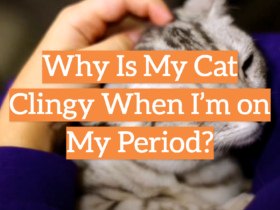


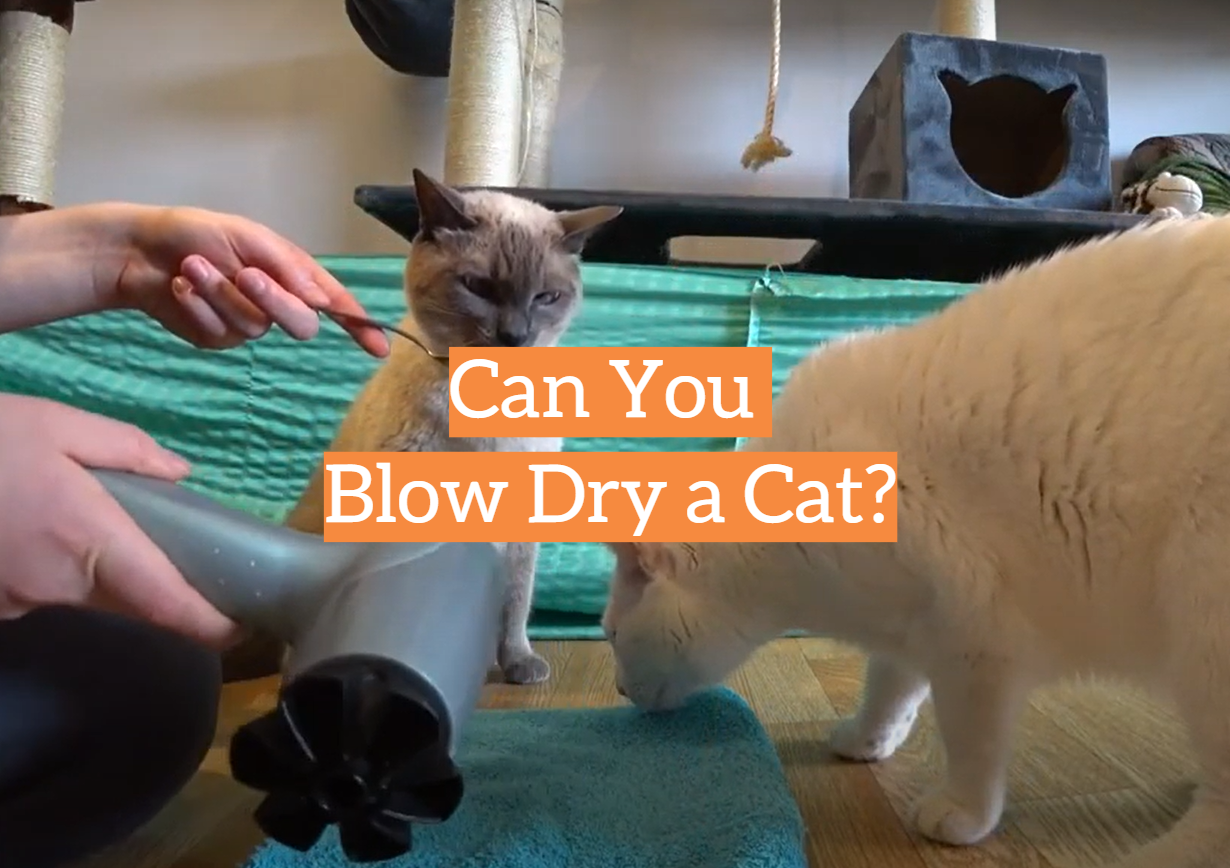

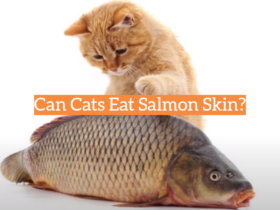
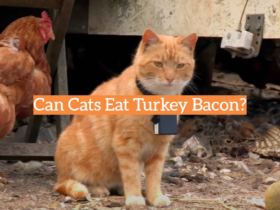
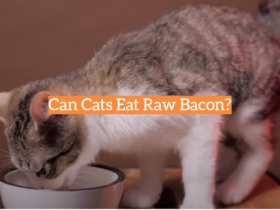
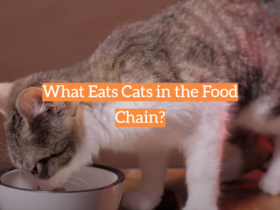
Leave a Reply